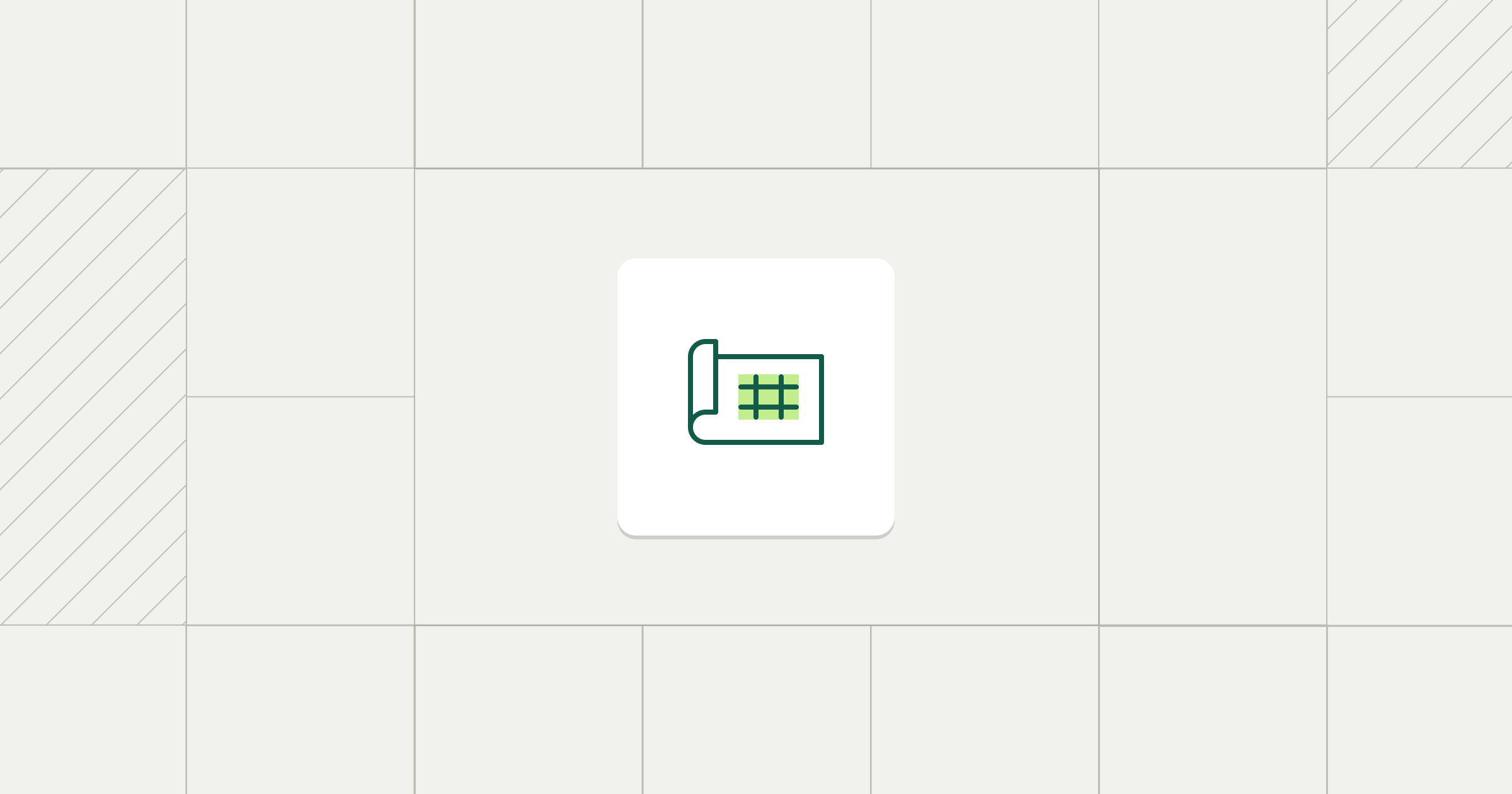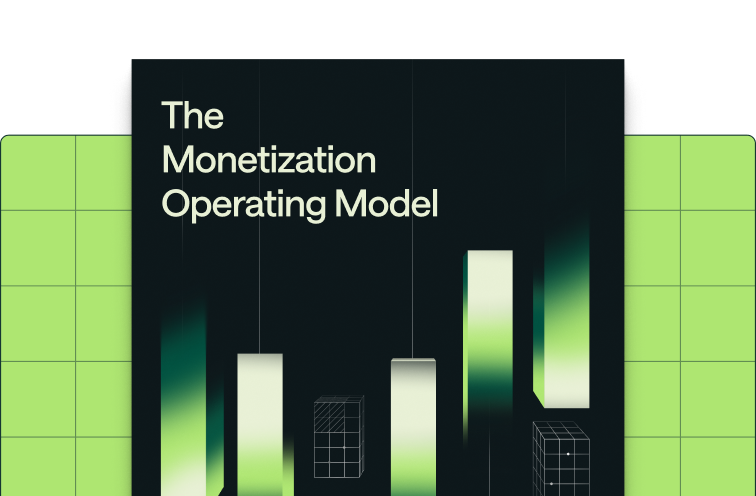Share
Legacy billing platforms optimized primarily for subscriptions collapse the instant you introduce usage-based pricing, hybrid models, or rapid iteration.
Modern products often deliver value through multiple channels, like platform access, consumption patterns, and outcome delivery. This requires billing systems that can handle subscription fees, usage metering, and complex contract terms simultaneously.
Great SaaS billing architecture solves this by separating pricing logic from product code, capturing usage in real time, and automating downstream financial workflows.
When implemented correctly, billing becomes infrastructure. It’s reliable, invisible, and capable of powering rapid growth rather than constraining it.
Whether you're a founder scaling past $10M ARR or a finance leader managing month-end close cycles, this systematic approach helps you stop firefighting billing issues and start monetizing effectively.
What is SaaS billing?
SaaS billing is the process of charging customers for software delivered over the cloud. Traditionally, this has meant using fixed subscription plans, often priced per seat.
But that model is changing.
SaaS companies have historically used subscription billing. It’s predictable, with recurring fees tied to user access.
But with the rise of AI and automation, the way customers derive value from software has fundamentally shifted.
Today, software does the work, as opposed to merely supporting it. It completes tasks, generates insights, and delivers measurable outcomes without human input.
Because of that, SaaS billing now also relies more heavily on:
- Usage-based billing: Charging based on actual consumption (e.g., API calls, tokens, compute hours, workflows)
- Outcome-based billing: Charging based on business results (e.g., cost savings, tasks completed)
- Hybrid models: Combining subscriptions with usage or results-based components
When your customer makes an API call, stores a gigabyte, or activates a seat, modern billing systems capture that event instantly and feed it through a pricing engine that calculates charges according to your rate card—whether flat-rate, tiered, usage-based, or hybrid.
Why SaaS products need modern billing architecture
Growth exposes billing system failures exactly when you can't afford downtime.
Usage-based add-ons, hybrid pricing, or mid-quarter price changes turn legacy subscription systems into engineering emergencies—delayed invoices, manual overrides, and sprint cycles consumed by billing bugs.
Modern billing architecture eliminates this constraint so product teams ship features while sales teams close deals without engineering managing manual workarounds or custom billing projects in the background..
Five operational realities break traditional systems and require architectural changes that most companies discover too late.
Billing infrastructure limitations
Purely seat-based platforms assume one price, one cycle, minimal variation. That logic fails when value comes from API calls, compute minutes, or AI tokens.
Legacy systems can't meter granular events, apply volume discounts, or combine recurring fees with real-time charges. Adding even basic usage components forces manual spreadsheet workarounds and invoice overrides.
This is a pattern that destroys billing accuracy as usage scales. And impacts revenue.
Heavy users subsidized by flat fees erode margins while light users overpay and churn.
Flexible rating engines that calculate charges in real time solve this by supporting usage tiers, minimum commits, and overage pricing without product code changes.
The bottom line is: the right architecture lets you charge for value delivered in addition to seats occupied without manual workarounds.
Product velocity demands
AI-driven features often require new pricing models to match their unique value delivery patterns. But when pricing lives in complicated code, that change queues behind other releases, requires QA cycles, and needs deployment windows.
Decoupled architectures cut this cycle from months to minutes. Business teams update rate cards while products automatically pull the latest pricing configurations.
This separation speeds up pricing changes and allows for safe experimentation, meaning you can A/B test discounted overage rates or launch region-specific plans without branching applications.
Entitlement-driven frameworks let non-technical teams deploy promotions or packaging changes instantly, while engineering focuses on shipping product features, not billing requests
Engineering resource constraints
Engineering teams often spend a significant portion of their time debugging billing issues in legacy systems.
Every line of custom billing code becomes technical debt. Proration rules, currency logic, and invoice creation logic consume sprint cycles that should fund product innovation.
Modern architecture reverses this drain through automated usage ingestion, centralized calculations, and automated invoice processing.
When metering, rating, and invoicing operate as services, billing incidents become configurable rules in operations consoles rather than engineering emergencies.
The result is reclaimed engineering capacity and faster feature delivery.
Financial operations complexity
Variable revenue creates finance headaches: aligning usage data with contract terms, applying taxes correctly, and recognizing revenue under ASC 606. Manual reconciliation slows month-end close and clouds forecasts.
Unified billing layers address this by serving as a single source of truth for every charge. Usage events, pricing logic, and customer terms reside in one system, generating immutable, itemized records that integrate directly with accounting workflows.
The payoff is faster closes, cleaner audits, and forecasts that survive board scrutiny.
Customer experience expectations
Modern buyers expect B2B software billing to match their cloud services bills. They want to see real-time usage dashboards, set proactive spend alerts, and upgrade or downgrade plans without contacting support.
Legacy systems hide usage behind opaque invoices, driving support tickets and eroding trust. Modern architecture, on the other hand, exposes usage metering through APIs and embeds it in user dashboards.
With modern billing, customers can see how today's activity affects next month's invoice, set budgets, and adjust tiers without account manager intervention.
Transparent billing transforms friction points into retention assets while freeing support teams from invoice disputes.
Building for these operational realities requires architecture that's flexible, decoupled, and real-time from implementation.
7 essential SaaS billing architecture components
Pricing strategies need to be adaptable. Flat subscriptions become usage-based overages and enterprise deals may need custom commitments.
Your infrastructure needs to respond just as fast.
Seven core components solve distinct operational problems while working together as a unified system. These components create the foundation for billing systems that adapt to business needs rather than constraining them:
1. Real-time usage ingestion
Customer API calls and compute events land in your system without delay or pre-aggregation. Continuous collection lets you refine metrics later, backdate pricing experiments, and surface live spend to customers.
High-throughput metering validates and stores every event at the granularity you bill on, preventing revenue disputes that surface weeks after service delivery.
2. Modular pricing engine
Separate pricing rules from product code to regain agility.
Instead of shipping new versions of your pricing logic every time finance tweaks a tier, expose a configuration layer that supports volume discounts, minimum commits, and promotional overrides.
Never hard-wire business logic into engineering backlogs again.
3. Centralized rate card system
Product, sales, and finance need a single source of truth for what a gigabyte, seat, or request costs.
Governed catalogs with version control, approval workflows, and audit trails prevent the "multiple spreadsheet" chaos that creeps in as markets, regions, and contract structures proliferate.
Downstream systems can execute changes confidently when the catalog is authoritative.
4. Automated operations
Invoices appear accurately and on schedule when customers upgrade mid-cycle or trigger usage-based charges. Automation handles usage ingestion, real-time calculations, and invoice generation so finance closes books on time while engineering stays focused on product.
5. Enterprise-grade integrations
Connect usage and invoice records to your customer relationship management (CRM) system for renewals, to ERP for revenue entries, and to payment gateways for collections in one continuous flow.
Standardized APIs and webhooks eliminate the swivel-chair work that slows quote-to-cash and fractures your customer view.
6. Comprehensive security framework
Encryption in transit and at rest, granular role-based access, and immutable audit logs are table stakes. Proper controls shield sensitive usage and payment information while satisfying compliance requirements.
7. Customer-facing interfaces
Buyers expect to track consumption like cloud spend: real-time dashboards, forecasted charges, and one-click plan management. Clear visibility reduces support tickets and increases retention—a direct profit lever when shifting to consumption models.
How to build a modern SaaS billing architecture
Billing architecture should bend to your business, never the other way around. The framework below works whether you're replacing legacy infrastructure or adding usage-based pricing for the first time.
1. Assess your current state
First, figure out how much engineering velocity billing takes away from your team.
Growth-stage companies generally lose a couple of sprint cycles to invoice bugs, pricing tweaks, and data reconciliations. Track pull requests tagged "billing" each month and translate those hours into features you didn't ship.
Then, map every dependency between pricing changes and code deployments. When launching a new plan requires touching your monolith, you've embedded pricing logic where it doesn't belong. This pattern breaks when you need rapid pricing iteration—exactly when growth accelerates.
Next, audit technical debt by examining where rate tables, discounts, and entitlement checks live in your codebase. Identify how many data sources finance teams manually stitch together at month-end. Find where CRM or ERP integrations break when you add new metrics or currencies.
Process gaps multiply cash-flow risk as usage volumes grow. Manual workarounds create reconciliation errors and stretch reporting close times from days to weeks.
This costs you engineering time — in other words, the opportunity cost of features that drive customer value.
2. Design your monetization framework
Before deciding whether to build or buy billing infrastructure, define how you want to monetize your product. Your pricing strategy should drive your technology choices, not the other way around.
First, define value metrics that mirror customer success patterns.
Usage-heavy APIs bill on requests or data processed. Workflow tools use seat-based access. Most products blend both approaches.
Start with a framework that maps each product capability to three buckets:
- Access value
- Consumption value
- Support value
Then, attach pricing elements to each bucket.
Subscription components work for predictable access. Usage components work for variable consumption. Commitment structures work for budget assurance.
Doing this helps you avoid false choices between pricing models.
Finally, translate your framework into a rate-card schema managed outside your codebase.
External pricing engines let you version rules, roll back experiments, and grant custom allowances without redeployments. Sketch the data flow from raw usage events to revenue recognition so finance can trace every line item to its source.
3. Make the build vs. buy decision
Estimate the total cost of ownership (TCO) for maintaining custom billing infrastructure. Include ongoing headcount, not just initial build hours. Rating engines and audit trails require dedicated engineering expertise to maintain them effectively.
Run your team through the following questions to determine whether you should build or buy:
- Do you plan to run pricing experiments frequently? How long does it currently take to execute pricing changes?
- What invoice accuracy SLA do you promise Finance? Can our billing system adapt to changes in packaging, pricing, and sales motion without major rework?
- What's the opportunity cost of engineers maintaining billing instead of shipping the core product?
- How integrated is our billing system with our product, CRM, and finance stack today?
- Can finance stakeholders get real-time customer, usage, and revenue data today?
If your answers reveal escalating maintenance burden or delayed market launches, external platforms that handle rating, invoicing, and payment orchestration typically cost less within 18-24 months.
“You saved us thousands of development hours that we would have spent building an in-house solution for metering and billing that would have slowed down our time-to-market. Metronome hasn’t just saved us developer time, you’ve saved us business time as well.”
— Nick Tankersley, Senior Director of Product Management, Cribl
When time-to-market and developer velocity matter, outsourcing billing infrastructure becomes a competitive advantage.
4. Implement infrastructure components
Start with real-time usage data ingestion. Batching events overnight creates billing disputes and erodes customer trust. Validate events on arrival and persist raw data for re-rating when plans change mid-cycle.
Then, deploy a modular pricing engine that reads configurations from your centralized rate card. Shifting price logic from code to configuration cuts update lead times and reduces bugs. Pair the engine with automated invoicing that handles proration, credits, and multi-currency rules.
Build integrations last, not first. Treat CRM, ERP, and data warehouse connections as adapters to your billing core.
Decoupled layers keep object structures consistent so contracts flow end-to-end without brittle transformations.
Your implementation checklist should cover six areas:
- Ingest events in real time
- Externalize rate logic
- Automate invoice generation
- Sync downstream systems
- Secure customer data
- Log every change for audits.
5. Scale and iterate
Shift from build mode to continuous calibration.
Monitor three indicators that predict billing system health:
- Invoice error rate
- Pricing change lead time
- Bill-run duration
Target less than 0.1% billing disputes, same-day pricing updates, and linear scaling as transaction volume doubles.
Treat pricing updates like feature flags. Version rules, target customer cohorts, and measure revenue impact before global rollout. Real-time usage analytics help you spot consumption anomalies before they hit finance.
Optimize your pipeline with idempotent event processing and horizontal scaling as volumes grow. Modern metering architectures keep costs flat per million events through stateless services.
Guard engineering focus. When billing incidents begin to consume a noticeable portion of on-call tickets, consider automating more processes rather than diverting product talent.
This cycle—assessment, decision, design, implementation, iteration—converts billing from a tax on engineering into infrastructure that compounds revenue and frees teams to ship features customers pay for.
Stop building billing, and start monetizing
Treat billing like cloud hosting or payroll — critical infrastructure you adopt, not a feature you code.
The moment you hard-wire pricing logic into your product, engineering becomes the bottleneck. Teams end up writing custom proration scripts, patching invoice generators, and chasing edge-case bugs. All that is work modern billing infrastructure already solves systematically.
At the end of the day, the real question is whether your current billing system accelerates growth or constrains it.
If it does, then you’re not billing for products in the Value Era.
{{widget-monetization-whitepaper}}







.avif)
.avif)

